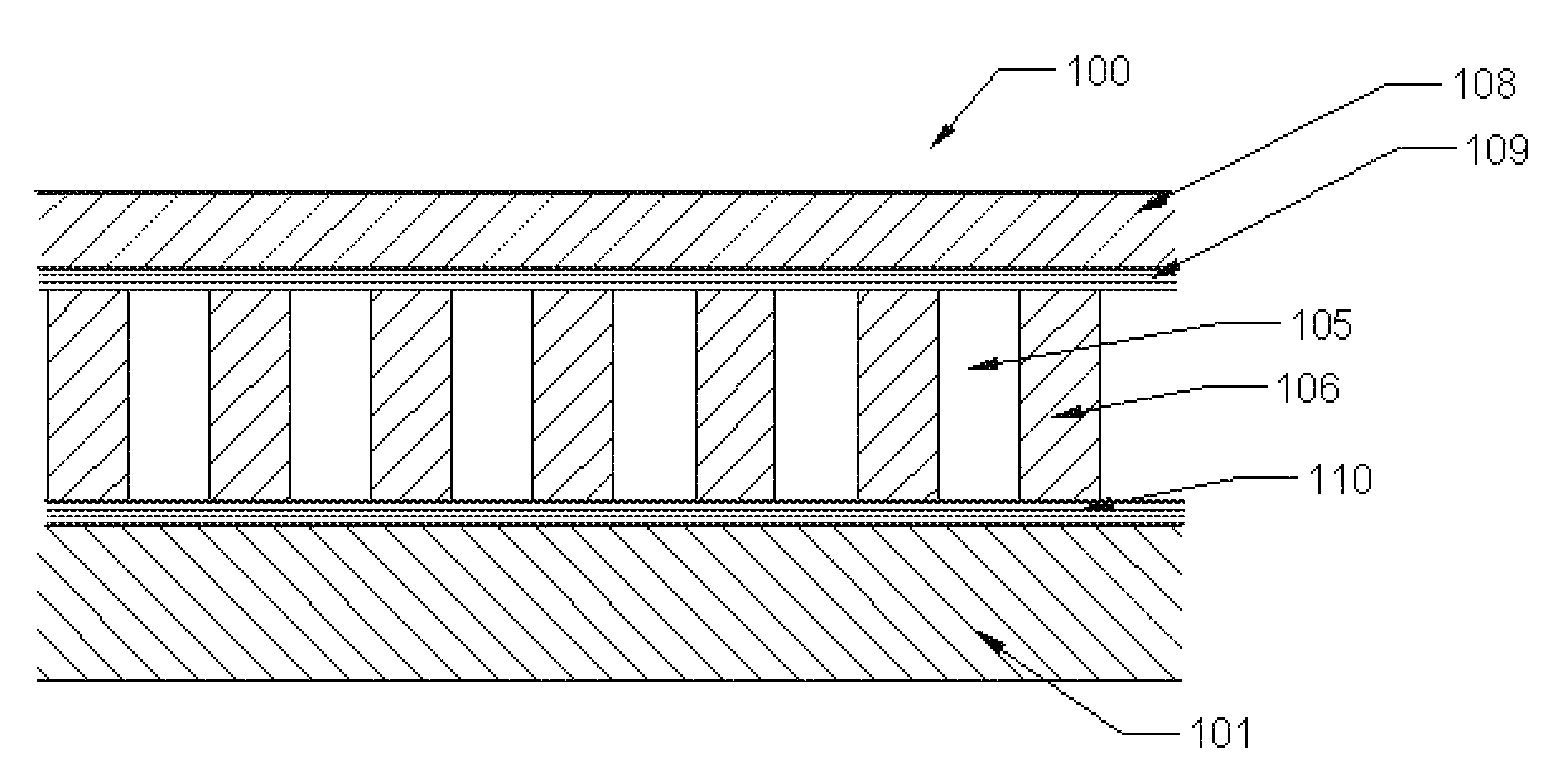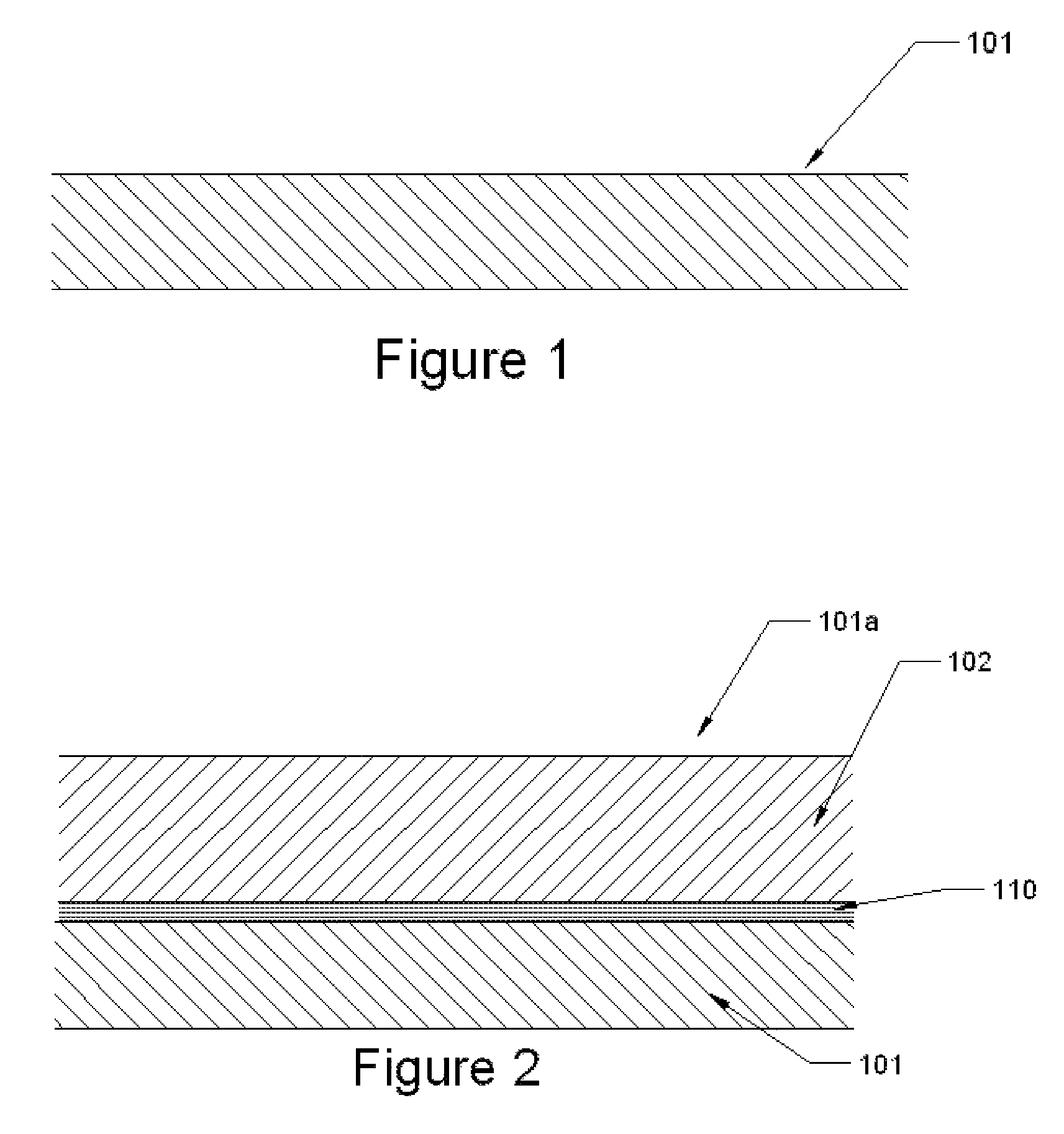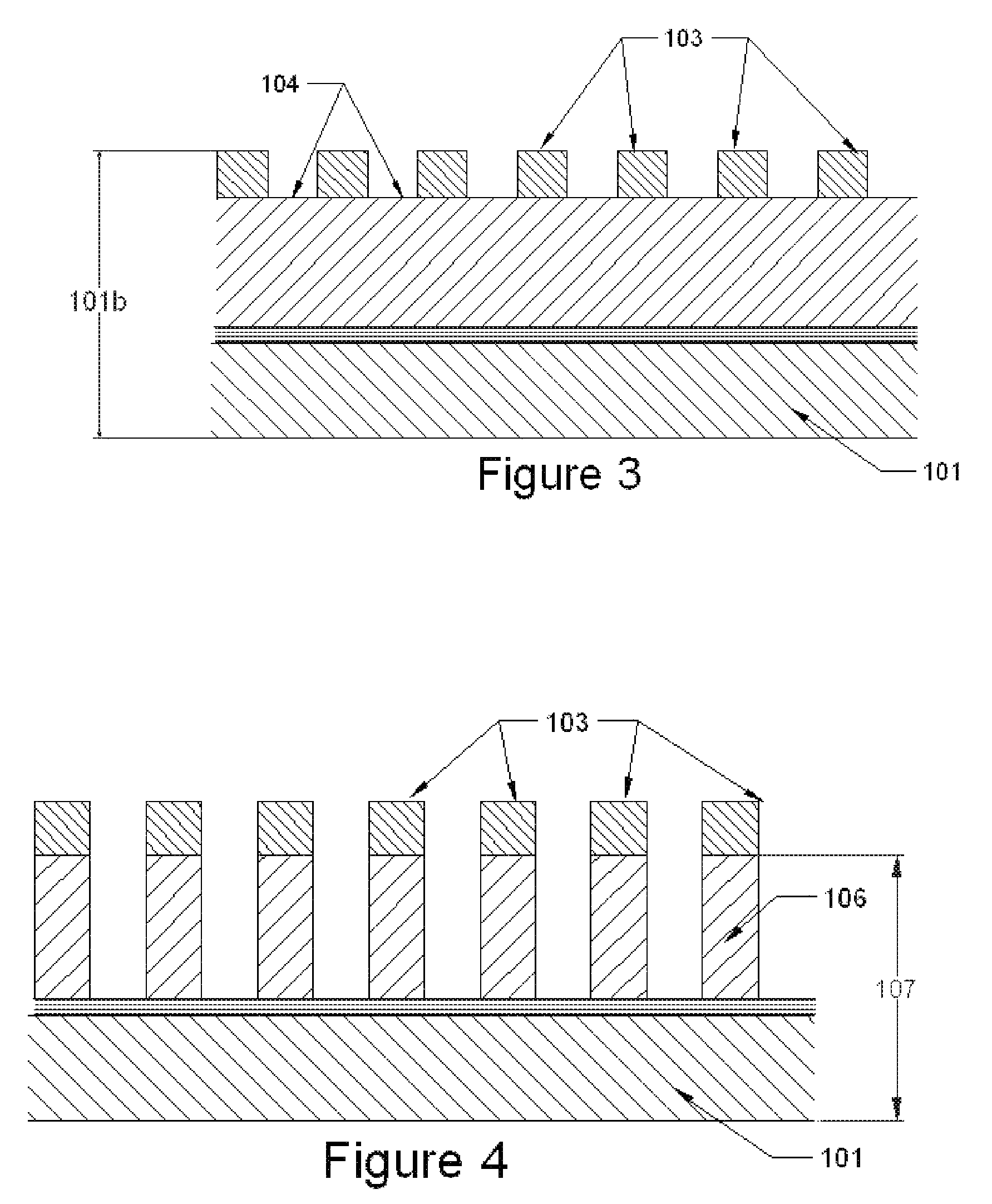Polarizer devices and processes of manufacture
a technology of polarizers and manufacturing processes, applied in the direction of polarizing elements, paper/cardboard containers, instruments, etc., can solve the problems of low production yield of approximately 70%, woefully inefficient polarizers, and high cost to buyers, and achieve the effect of high efficiency and economics
- Summary
- Abstract
- Description
- Claims
- Application Information
AI Technical Summary
Benefits of technology
Problems solved by technology
Method used
Image
Examples
Embodiment Construction
Roll-Fed Process
[0038]This embodiment of the invention is the specification, design, development, assembly, fabrication, integration, testing and certification of a High Speed Roll-Fed Nano-Etching Production Facility (FIG. 7a), which will automate the entire thin film fabrication process.
[0039]The Nano-Etching Channel Grid Polarizer Device Production process will be setup either as a fully automated or semi-automated large-scale production line.
[0040]It will consist of multiple Reels, including, but not limited to:
[0041]a) A first Transparent Layer Supply Reel 124;
[0042]b) A first Adhesive Supply Reel 125;
[0043]c) A Non-Transparent layer Supply Reel 126;
[0044]d) A second Adhesive Supply Reel 127;
[0045]e) A second Transparent Layer Supply Reel 128; and
[0046]f) A Take-up Reel 129.
[0047]And an integrated multiple Stage Assembly, Fabrication and Inspection production line consisting of the following staging, processing and inspection elements and areas:
[0048]A. Cleaning and Preparation...
PUM
| Property | Measurement | Unit |
|---|---|---|
| height | aaaaa | aaaaa |
| height | aaaaa | aaaaa |
| width | aaaaa | aaaaa |
Abstract
Description
Claims
Application Information
 Login to View More
Login to View More - R&D
- Intellectual Property
- Life Sciences
- Materials
- Tech Scout
- Unparalleled Data Quality
- Higher Quality Content
- 60% Fewer Hallucinations
Browse by: Latest US Patents, China's latest patents, Technical Efficacy Thesaurus, Application Domain, Technology Topic, Popular Technical Reports.
© 2025 PatSnap. All rights reserved.Legal|Privacy policy|Modern Slavery Act Transparency Statement|Sitemap|About US| Contact US: help@patsnap.com



